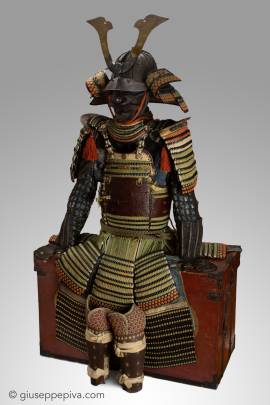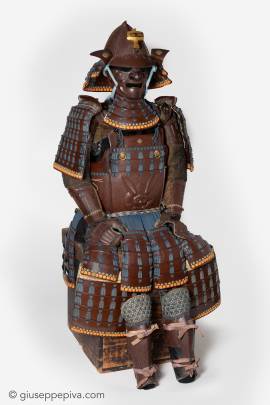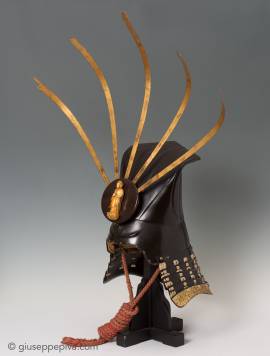Mid Edo period, 18th centuryKaga schoolEXHIBITIONMei Tō - Katchu Ten (“Exhibition of famous swords and armor”), Izumi National History Museum, 2002LITERATUREMei Tō - Katchu Ten, Izumi National History Museum, 2002, Cat. 56. Pag. 72CERTIFICATEThe armor accompanied by a certificate of registration as Koshu Tokubetsu Kicho Shiryo (Especially Important Armor Object) no. 1215 issued by the Nihon Katchu Bugu Kenkyu Hozon Kai (Japanese Armor Preservation Society), 2018.10.21 This authentic samurai suite of armor features some typical characteristics of Kaga’s armor...
WORKS FOR SALE
Samurai armor decorated with an embossed rabbitEdo period, 19th centuryThis authentic samurai armor is complete and original, with consistent elements. The helmet is a rare momonari kabuto (peach-shaped helmet) made of iron and constructed of eight plates connected with folded edges (suji-kabuto). The iron is finished with a warm-toned sabiji lacquer that is matched in color by the lacquer used to cover the shikoro (neck guard) and the other horizontal plate parts. The five-element cuirass bears on the front an exceptional embossed decoration (...
Early Edo Period (1615-1867) 17th century The kakuzukin, or squared cap, was formed by a rectangular cloth folded and sewn along the sides. The decoration over the iron bowl imitating this headgear is made in harikake, a mixture of papier-maché and lacquer that results light and solid at the same time. The last plate of the neck guard (shikoro) on this helmet is laquered in gold.Harikake had been used during the Momoyama period (1573-1715) when generals begun to wear large helmets shaped with unusual and extravagant forms called kawari kabuto. Kakuzukin-nari helmets are...
Copyright © 2016 - giuseppe piva - VAT: 05104180962










